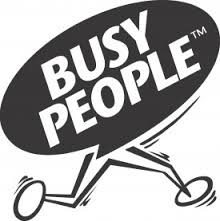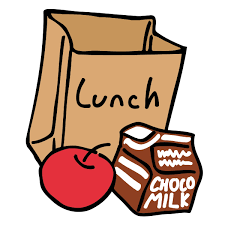ffhfhfhgfyrujjgdssf
Author: inspiration897
Entrepreneurial education for young children & adults

“Use your gifts faithfully, and they shall be enlarged; practice what you know, and you shall attain to higher knowledge.” Matthew Arnold
In today’s society, we all have an obligation to be entrepreneurs, you have to ask how to create value for customers, how to run a better and more responsible business, you can’t just be a cog in the machine anymore, in contrast to that, not all the entrepreneurs are going to make it, but the ones that do are going to prosper and grow.
Where do entrepreneurs get their best ideas? Creativity has been always the terminology used answer that question, well at the heart of any successful business is a great idea. Some seem so simple we wonder why nobody thought of them before, others are so revolutionary we wonder how anybody could’ve thought of them at all. But those great ideas don’t come randomly, and that leaves a lot of would-be entrepreneurs asking the same question, How did everybody else get inspiration to strike and how can we work the same magic? Yet ideas for start-ups often begin with a problem that needs to be solved and they don’t usually come while you’re sitting around sipping coffee and contemplating life, they tend to reveal themselves while you’re hard at work on something else.
In conclusion, perhaps the greatest factor that determines whether or not an entrepreneur will be successful is not the business idea itself, but rather the entrepreneur’s willingness to try (and keep trying) to turn the idea into reality. Great ideas are abundant, but it’s what we decide to do with them that counts. You know what the usually say, go big or go home, it’s that time whereby you must know your business strategies very well.
SELF DEFENCE TRAINING FOR WOMEN

The world of self defense is violent by nature; no sport art here. If somebody is attacking you and you must protect yourself then it’s certainly not some game. Your existence could certainly hang in the end result of precisely what you will perform to take out your attacker. To that end, many martial arts never train with weapons or weapons disarms. If you are really in one of these arts you may perhaps want to get some outside help to obtain the skills to defend yourself from basic weapons which can be used against you on the street. These fall into 3 types, generally they are: guns, edged weapons, and sticks (clubs or baseball bats). Here is the compressed list of strategy for each.
Guns: you close the gap between you and them so that the reaction time from attack to pull the trigger is really in your favor. You see, with respect to the adversary to pull the trigger he: first must recognize he or she is under attack. Second he or she needs to identify exactly where you are going (path). 3rd he must realize exactly where he is; that is, where the weapon is pointed plus his or her physical position. Next this individual must figure out exactly what course of action to put into action. At this moment is where he/she might decide they must rotate left, raise the weapon a lot higher, and fire. At last he/she has to execute the program. This all requires psychological time and by closing the distance you have actually reduced their successful response time down and also into your favor.
Edged weapons and sticks … you want to open the distance from your attacker. You want these people to make a long distance and committed attack towards you. This puts you in a favorable position as they need to move a long way to get you. You possess the time to observe the attack, decide what to do and execute the plan. You likewise drop their reaction time down as you close in to disarm or attack. Much like in the firearm scenario you have indeed shortened their perception along with reaction time.
Also paramount in self defence that you don’t fool around. You need to disable your attacker so they can’t return in order to harm you. What I mean here is you do not want them getting back up off the ground and being rather psychotic at you. You must ensure they don’t want to continue the attack.
If you learn to disarm weapons you should also study the best ways to employ that weapon if required. You might learn how to shoot or at least how you may employ that gun to your benefit. There is actually a weapon called a defender (self defense weapon) which is a small plastic, unusually shaped, weapon which is actually utilized on pressure points. You can view this at PDWS. biz. You are able to utilize most everything you pick up like| a defender and that includes a firearm. A firearm can be employed on pressure points on the body as well as against boney locations of the body, just like a defender or even a Kubotan.
In conclusion, you are the weapon and anything that gets into your hands you need to know how to utilize it. Gun, edged weapons or clubs … you need to know how to use them for your own protection or the protection of your loved ones. There are great videos to had on these subjects, all found on the web. So I encourage my fellow artists to broaden their skill sets in martial arts and turn them into self defense skill sets too!
HOW TO BECOME A BETTER WRITER

Generally, there are two things that writers recommend to others who want to improve: more writing, and reading. More writing is an obvious one, since practice makes perfect. But writing in a vacuum won’t do us much good. Reading exposes us to other styles, other voices, other forms and genres of writing. Importantly, it exposes us to writing that’s better than our own and helps us to improve.
Since reading is something we learn to do when we first start school, it’s easy to think we’ve got it sorted out and we don’t need to work on this skill anymore. Or, that we don’t need to exercise our reading muscles anymore.
So let’s take a look at five unconventional ways to become better writers by changing the way we read.
1. Skip sections
When we’re reading on the web, we’ll often find handy stuff to help us do this, like subheadings or bold text. These can help us skim through and get the gist of an article quickly, so we can decide whether to go back and reread the parts we skipped.
Can I be blunt on this subject? If you don’t have time to read, you don’t have the time (or the tools) to write. Simple as that. – Stephen King
Even if you’re not a ‘writer’ per se, writing can be highly beneficial. It can be helpful for a number of things:
- help you to work through feelings
- stay positive
- express your thoughts more clearly
- market your product.
Generally, there are two things that writers recommend to others who want to improve: more writing, and reading. More writing is an obvious one, since practice makes perfect. But writing in a vacuum won’t do us much good. Reading exposes us to other styles, other voices, other forms and genres of writing. Importantly, it exposes us to writing that’s better than our own and helps us to improve.
Reading—the good and the bad—inspires you. It develops your palate for all the tricks that writers have invented over the years. You can learn from textbooks about the writing craft, but there’s no substitute for discovering for yourself how a writer pulls off a trick. Then that becomes part of your experience. – Roz Morris
Since reading is something we learn to do when we first start school, it’s easy to think we’ve got it sorted out and we don’t need to work on this skill anymore. Or, that we don’t need to exercise our reading muscles anymore. But illustrator Chuck Jones pointed out in this letter to a class of students how silly it would be to not read when we have the chance:
Knowing how to read and not reading books is like owning skis and not skiing, owning a board and never riding a wave, or, well, having your favorite sandwich in your hand and not eating it. If you owned a telescope that would open up the entire universe for you would you try to find reason for not looking through it? Because that is exactly what reading is all about; it opens up the universe of humour, of adventure, of romance, of climbing the highest mountain, of diving in the deepest sea.
So let’s take a look at five unconventional ways to become better writers by changing the way we read.
1. Skip sections
I’m one of those people who feels bad if I miss anything (sometimes known as ‘fear of missing out‘). When it comes to reading, I definitely feel this. If something further ahead catches my eye, I can’t keep reading until I go back and catch up on the parts I missed.
I’ve actually realized recently that there is a kind of freedom in giving up that feeling of needing to see everything. Sometimes, it’s okay to skip parts. Especially if they’re not relevant to you. Readers on the web skim for a reason. In fact it has almost become our default way of reading, as this eye-tracking study shows:
2. Quit altogether
The older I get, the more I’m becoming a fan of quitting. Not for the sake of it, of course, but when continuing on doesn’t have enough (or any) benefits, sometimes pulling out is the best option.
3. Read things you hadn’t thought about reading
4. Walk away and take notes
5. Fight back
There’s a reason social networks like Goodreads and GetGlue exist. We love to share our recreational activities. We love to have an opinion on everything, including what we read.
This is a great thing.
If what you read makes you angry, or sad, or frustrated, or whatever—use that. Finding something you care about is worth cherishing. If you want to rant against the author’s premise or post a rebuttal to their argument, go for it. This will make your brain work really hard, as you analyze their ideas and form your own in response.
TRUE AND REAL FRIEND:
HOW TO BE REAL AND TRUE FRIEND:
To be a real and true friend for someone needs lots of qualities and if you have that you can make good long term relations with the people. A lot of research has been done looking into the benefits of friendship and the result has found exactly what you must expect. It turns out that the better quality relationships you have; the more likely you are to be happy.

A friend in need is a friend in deed is a very popular saying and I have experienced it personally also. Many friends have been true to me and I also have been true to many of them and during this sweet journey with friends I got many points which taught me when you call someone your true friend.
If your friend understands what you intend to say even before you say anything he or she is your true friend. Whenever you are sad your true friend will understand and will do his/her best to bring you out from that sad situation and give happiness and new meaning to your life. They will understand the tears behind your laughter and the pain in your smile. Hence, it is usually said if you have even one true friend, most of the problems of life are already sorted. This can be elaborated in the sense that if you are in some sort of problem where you know that only you can solve that particular problem but you will gain more confidence if you are assured that I have at least some to support me in my tough times. Having this person in your life becomes very crucial especially in today’s world where you have to face new challenges daily and our jobs have become very stressful.

In life, we will never loose a friend; we will only realize who your true friends are. It’s better to have an enemy who puts you down on your face than to have a friend who secretly back stabs you. Always remember, there are two things that you don’t have to chase: TRUE FRIENDS AND TRUE LOVE!!
At last, I would like to share a very beautiful quote from Michael Bassey Johnson, The Infinity Sign.
“True friends are those who came into your life, saw the most negative part of you, but are not ready to leave you, no matter how contagious you are to them.”
HEALTH & FITNESS FOR BUSY PEOPLE:

Being a hardworking professional probably means that most of your time is spent either commuting or at the office. It can be difficult to find time to get your daily workouts in, which is why so many professionals slowly get more and more out of shape over the years.
Don’t let that be you!
Here’s how you can be a fit hardworking professional:
1. Hit the Gym Near the Office
If you’re lucky enough to work near a gym, make it one of your daily stops. No excuses–hit the gym every day.

2. Make Your Commute a Workout
Do you live close enough to your office to walk, jog or cycle? At least a few times a week, forget about taking the bus or driving, and instead make your commute your daily workout.
3. Skip Lunch
Just because it’s called “lunch break” doesn’t mean you need to spend that time at a restaurant. Instead, take your hour of lunch as a time to get your exercise in–either at a gym, in your park, or in your nearby Yoga studios. You can then eat your lunch at your desk.

4. Do an Office Workout
You would be amazed by how much exercise you can do if you’ll just spend five or 10 minutes working out every hour. Do a few lunges or squats while on the phone, and do a few push-ups as you’re waiting for your video to render. You can find dozens of five or 10-minute workouts online, and they’ll make it easy for you to get in shape at the office.
5. Take the Stairs
Take the stairs both up and down any time you need to enter or exit the building, and you’ll do a leg workout that’s great cardio as well.

6. Find Office Workout Buddies
Need help to motivate yourself to get your workout in? Find a friend at the office that will work out with you, and sign up for a gym together. Make it your daily goal to motivate each other.
7. Take a Class You Enjoy
Many people need that extra helping hand to motivate them to work out, and the gym may not be enough. Instead of doing the gym, sign up for a class at your local martial arts dojo, Yoga or Pilates studio, or even a dance class. You’ll have tons of fun, all the while getting in shape.
8. Accept No Excuses
This is one of the hardest things to do, but it’s time to be a bit more selfish for the sake of fitness. Working late? Don’t let that stop you from hitting the gym after work, or getting up a bit earlier for your run. It can be hard to work out earlier in the morning or later at night, but if it’s the only way to actually fit it in, then do it!
9. Do What You Can
Just because you hear the word “workout” doesn’t mean you need to spend an hour at a gym. You can do a high-intensity workout that burns a whole lot of calories in less than 20 minutes, and you’ll still have time for a bit of a break.
10. Make Casual Activities Exercise
If you don’t have too much time for exercise, make any of the casual activities you do into your workout. Speed walk through your grocery store when you do the weekly shopping, and make sure to turn that dog walk into a jog or run.
First blog post
This is the post excerpt.
This is your very first post. Click the Edit link to modify or delete it, or start a new post. If you like, use this post to tell readers why you started this blog and what you plan to do with it.

